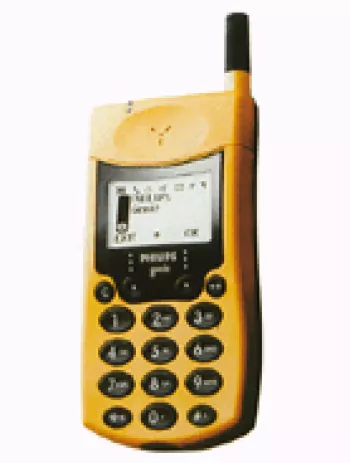
Overview
The Philips D813 is a feature phone that was introduced to the market in the third quarter of 2011. Though it has now been discontinued, it remains a device that holds a place in the evolution of mobile technology. Known for its straightforward and durable design, the Philips D813 catered to users who preferred a traditional phone interface with some modern features.
Design and Build
The Philips D813 sports a simplistic yet sturdy design, with dimensions measuring 113 x 56 x 15.6 mm and a weight of 121 g. Despite its relatively bulky frame compared to today's standards, it was quite manageable for the period it was launched in. The phone was designed to be held comfortably, with its typical silver finish providing a clean and modest aesthetic. The use of a Mini-SIM, a standard of the time, reflects its status as a practical device for everyday use.
Display
The device features a 3.2-inch TFT resistive touchscreen with a resolution of 240 x 400 pixels. This translates to a screen-to-body ratio of approximately 46.1%, making the display a notable aspect of the device. With the ability to display 65K colors, the screen provided a satisfactory user experience for basic phone operations like navigating through the menu, browsing contacts, and viewing pictures.
Performance
In terms of performance, the Philips D813 offers straightforward functionality with its feature phone operating system. While detailed specs about its processor and RAM aren't known, the device is built to handle essential tasks efficiently, including calling, messaging, and basic multimedia usage without the sophisticated apps we see in today's smartphones.
Camera
The phone is equipped with a single 3.15 MP main camera with autofocus. This camera was aligned with the expectations for feature phones at the time, allowing users to capture photos and even record videos at 320p@15fps. Although it lacks a front camera, the D813 provides fundamental photography capabilities for everyday moments.
Battery Life
The Philips D813 is powered by a removable Li-Ion 1300 mAh battery. This battery provides up to 140 hours of standby time and up to 4 hours of talk time. Given the device's focus on basic functionality without heavy reliance on power-draining applications, the battery life was sufficient for typical day-to-day tasks.
Storage
With an internal storage capacity of 130MB, users could store essential data such as contacts and text messages. For additional storage, the phone supports microSDHC cards via a dedicated slot, with a 2 GB card included. This option was particularly useful for users wishing to store more photos and files on their device.
Connectivity
Highlighting its connectivity options, the Philips D813 includes Bluetooth 2.1 with A2DP for wireless file transfers and connectivity with other devices. It also has GPS support for basic navigation needs. While it lacks Wi-Fi and radio capabilities, it does provide a miniUSB 2.0 port for charging and data transfer, reflecting the standard tech of its time.
Network and Communication
The Philips D813 operates on GSM and CDMA networks with support for EV-DO Rev.A up to 3.1 Mbps, ensuring decent network performance for calls and messages. It supports GSM 900/1800 bands while excluding GPRS and EDGE, which is indicative of its straightforward communication focus without the complexities of mobile internet usage prevalent today.
Additional Features
In terms of other features, the device includes an accelerometer sensor, which is a plus for navigating through certain applications and performing screen orientation functions. The messaging capabilities consist of SMS with threaded view, MMS, and email, catering to all basic communication needs. Despite its simplicity, the phone comes pre-loaded with games to offer some entertainment to users.
Conclusion
In summary, the Philips D813 represents a class of mobile devices that bridged the gap between early feature phones and the burgeoning smartphone era. With a focus on durability, basic functionality, and efficiency, it served as a reliable phone for users who prioritized voice communication and basic media handling. Although it lacks the advanced features and internet capabilities of modern smartphones, its straightforward design and practical features made it a reliable communication tool during its time of release.
Key Features of Philips D813
- Network supported: GSM / CDMA / EVDO with EV-DO Rev.A 3.1 Mbps speed
- Compact dimensions of 113 x 56 x 15.6 mm and lightweight at 121 g
- 3.2 inches TFT resistive touchscreen with 65K colors
- Expandable storage via microSDHC card slot (2 GB card included)
- 3.15 MP Autofocus main camera
- Bluetooth 2.1 with A2DP support
- Equipped with GPS for navigation
- Removable Li-Ion 1300 mAh battery with up to 140 hours standby time
- Accelerometer sensor for orientation detection
- Messaging features: SMS (threaded view), MMS, Email
Philips D813 Main Disadvantages
- No support for GPRS and EDGE technologies means limited internet connectivity on mobile networks.
- The device has been discontinued, which may impact the availability of support and spare parts.
- Uses resistive touchscreen technology, which is generally less responsive than capacitive touchscreens.
- Low screen-to-body ratio (~46.1%) and low pixel density (~146 ppi), leading to less vibrant display quality.
- Very limited internal storage of only 130MB, requiring frequent management of space.
- Video recording capability is limited to low resolution (320p@15fps).
- No front-facing selfie camera, which is a common feature in modern phones.
- Lacks a 3.5mm audio jack, which is inconvenient for users who prefer wired headphones.
- No Wi-Fi connectivity, limiting internet access to mobile networks only.
- No FM radio support for users who enjoy listening to the radio.
- Limited talk time and standby time with a 1300 mAh battery.
- No Java support, limiting the availability of certain applications and games.

View Also
More Phones
All Rights Reserved +14266 Phones © Mobilawy 2025

























